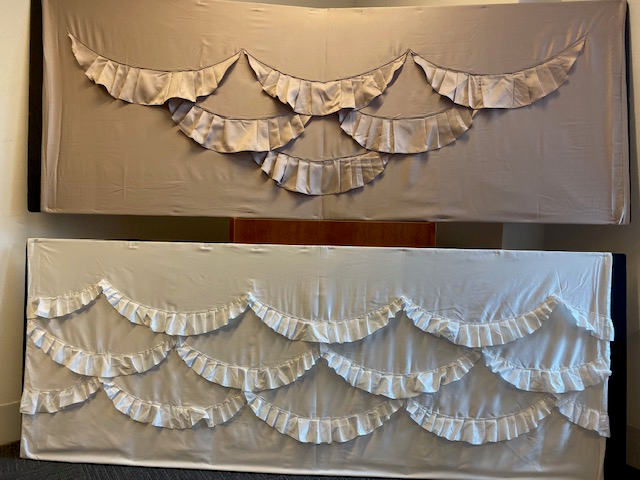How Do You Defend A Claim For Copyright Infringement?
Written by Ramsay Monime | August 28, 2020
At its most basic, copyright is the right to prevent people from copying your work. Under the Copyright, Designs and Patents Act 1988 (“CDPA”), copyright will exist in certain categories of original works which are:
- Original literary, dramatic, musical or artistic works;
- Sound recordings, films or broadcasts; and
- Typographical arrangements
Although the law goes a little further, to secure copyright protection, the work (for example, a painting) needs to be an “original intellectual creation” and expressed in an identifiable manner.
It’s a great intellectual property right as in the UK it is entirely free and is automatically assigned to an author. There is no need to have to register copyright as needs to be done for trade marks, registered design rights and patents.
When a work is protected by copyright, the owner of the copyright can prevent other people or entities from copying or using the work without their permission. If another party does copy or use the work without permission, then that’s what is referred to as copyright infringement. You can learn more here: What is copyright infringement, and how do I avoid it?
In the event of copyright infringement, the aggrieved party can raise a claim. But what exactly is a claim, and how do you defend your case if you’re on the other end of a copyright claim?
What is a copyright infringement claim?
We refer to “a claim for copyright infringement” but what does a “claim” actually mean? A claim effectively is the formal assertion of a cause of action by one person (who we refer to as the claimant) against another (who we refer to as the defendant). A claim is initiated when a claim form is issued by a court at the request of the claimant.
The process usually starts with an infringement notice usually titled a ‘letter before action’ or a ‘cease and desist’ letter.
It’s a document sent from one party to another. In the document, the sender requests that the recipient stop a particular activity, usually because the sender believes that it infringes upon their rights. Cease and desist letters effectively serve as a warning that the sender intends to launch further legal proceedings if the activity does not stop.
Learn more: How To Respond To A Copyright Infringement Notice
What are the defences to copyright infringement in the UK?
Generally speaking, the following defences are the most common:
- Independent creation (i.e. the author created the work independently without copying). Copying may be deliberate or subconscious. There will be no infringement where a substantial reproduction of the work has been independently created. Authors of copyright-protected work should therefore take the following precautionary measures to assist in the defence of a copyright infringement claim: keep detailed records of how your work is created and, if your work has drawn from recent trends, ensure your records include information about these trends;
- The work that is alleged to have copied from is itself a copy of another work; and/or
- There is not a sufficient number of similarities between the two works for there to be an inference of copying.
Ideally, all three of these defences would be run together. However, this is not always easy, especially where, for example, there is no close prior art to argue that the work you are accused of copying is itself a slavish copy of a work of prior art.
That said, the defences of independent creation and no sufficient similarity can still be used effectively to successfully defend a claim for copyright infringement, especially where a particular design motif has become commonplace. A good example of this is the recent decision of the Intellectual Property Enterprise Court (the IPEC) in Ashley Wilde Group Limited v BCPL Limited [2019] EWHC 3166 – more on this case later.
Are there any exemptions to copyright infringement in the UK?
There are certain circumstances in which you can make use of another person’s copyrighted works and these are set out in the CDPA. Some of the main examples are:
- Non-commercial use e.g. for research or private study, the purpose must be non-commercial or private study;
- Text and data mining which is the use of automated analytical techniques to analyse text and data for patterns, trends and other information
- For criticism, quotation or review;
- For reporting news or current events any work can be used, except photographs; and
- In some scenarios without the copyright owner’s permission for the purposes of parody, caricature and pastiche.
How to defend a claim for copyright infringement
Firstly, you will want to thoroughly review any correspondence sent in the first instance (the letter of claim/action). What is the work that is being alleged to have been copied?
You’ll then want to have a look at your own (alleged infringing) works – where have they come from? Were they created by you/ your company? Do you have records of exactly how those works were created and the reasons for the choices of any specific features in your work? Where the work has been commissioned, did you have an agreement in place with the author and if not, are there risks that the freelancers have taken the work from somewhere else?
If the work has indeed been copied, are there any available exemptions available to you that are worth considering?
Once the internal investigation is complete, we would highly recommend speaking with a team of copyright experts to understand the merits of a potential claim and the next steps. An expert can assist you with preparing an appropriate response that best protects your interests.
Example of a successful copyright infringement claim defence
Ashley Wilde Group Limited v BCPL Limited [2019] EWHC 3166
Ashley Wilde Group Limited (Ashley Wilde) designed the pleated duvet cover at the top of the image below in 2012 and sold it between 2014 and 2015. BCPL Limited (BCPL) sold the pleated duvet cover at the bottom of the image below from 2017, which was designed in 2016.
Ashley Wilde believed BCPL’s pleated duvet cover infringed the copyright in its pleated duvet cover and issued proceedings for copyright infringement.

The IPEC found that there was no copyright infringement. This was because of the success of the defences of lack of sufficient similarity and independent creation.
Lack of sufficient similarity
The court found that there were not sufficient close or extensive similarities for there to have been copying.
The IPEC explained that when assessing the similarities between the two works, anything that was commonplace should be disregarded from the comparison. Here, the IPEC accepted BCPL’s evidence that pleated scallops were having ‘a moment’ in the interior design industry in 2016 and that they were therefore commonplace. The IPEC also found that pleated scallops in rows were commonplace. As a result, these similarities had to be discarded from the assessment of whether there was copying. From what was left, the IPEC found that there were not sufficient close or extensive similarities for there to have been copying.
Independent creation
The IPEC explained that if the lack of sufficient similarities defence had not succeeded, the independent design defence would succeed. This was because BCPL had kept a detailed record of how it created its pleated duvet cover and these records indicated that it had not seen Ashely Wilde’s pleated duvet cover (i.e. there was no copying).
Our analysis
This decision illustrates the importance of keeping records. Firstly, of the design creation process itself, and secondly, of design trends at the time of their design. The case further demonstrates that it is very hard to succeed with a copyright infringement claim, especially if a lot of what has been copied is commonplace.
Designers should take the following precautionary measures to assist in the defence of a copyright infringement claim: keep detailed records of how your work is created and, if your work has drawn from recent trends, ensure your records include information about these trends.
Written by Ramsay Monime and Shamina Knights

